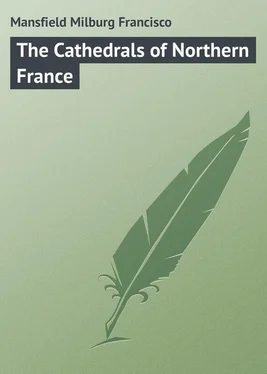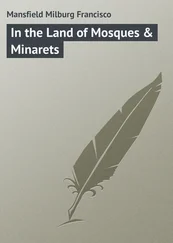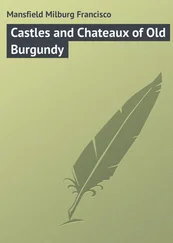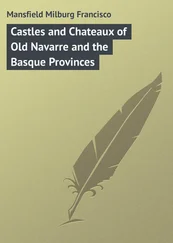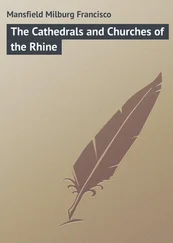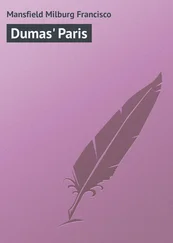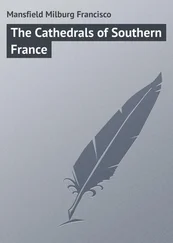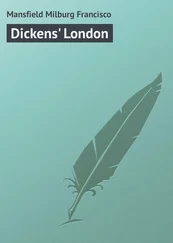Milburg Mansfield - The Cathedrals of Northern France
Здесь есть возможность читать онлайн «Milburg Mansfield - The Cathedrals of Northern France» — ознакомительный отрывок электронной книги совершенно бесплатно, а после прочтения отрывка купить полную версию. В некоторых случаях можно слушать аудио, скачать через торрент в формате fb2 и присутствует краткое содержание. Жанр: foreign_prose, Путешествия и география, на английском языке. Описание произведения, (предисловие) а так же отзывы посетителей доступны на портале библиотеки ЛибКат.
- Название:The Cathedrals of Northern France
- Автор:
- Жанр:
- Год:неизвестен
- ISBN:нет данных
- Рейтинг книги:4 / 5. Голосов: 1
-
Избранное:Добавить в избранное
- Отзывы:
-
Ваша оценка:
- 80
- 1
- 2
- 3
- 4
- 5
The Cathedrals of Northern France: краткое содержание, описание и аннотация
Предлагаем к чтению аннотацию, описание, краткое содержание или предисловие (зависит от того, что написал сам автор книги «The Cathedrals of Northern France»). Если вы не нашли необходимую информацию о книге — напишите в комментариях, мы постараемся отыскать её.
The Cathedrals of Northern France — читать онлайн ознакомительный отрывок
Ниже представлен текст книги, разбитый по страницам. Система сохранения места последней прочитанной страницы, позволяет с удобством читать онлайн бесплатно книгу «The Cathedrals of Northern France», без необходимости каждый раз заново искать на чём Вы остановились. Поставьте закладку, и сможете в любой момент перейти на страницу, на которой закончили чтение.
Интервал:
Закладка:
Francis Miltoun
The Cathedrals of Northern France
APOLOGIA
"There are two ways of writing a book of travel: to recount the journey itself or the results of it." This is also the case with regard to any work which attempts to purvey topographical or historical information of a nature which is only to be gathered upon the spot; and, when an additional side-light is shown by reason of the inclusion, as in the present instance, of the artistic and religious element, it becomes more and more a question of judicious selection and arrangement of fact, rather than a mere hazarding of opinions, which, in many cases, can be naught but conjecture, and may, in spite of any good claim to authoritativeness, be misunderstood or perverted to an inutile end, or, what is worse, swallowed in that oblivion where lies so much excellent thought, which, lacking either balance or timeliness, has become stranded, wrecked, and practically lost to view because of its unappropriate and unattractive presentation.
To-day, the purely technical writer may have little hope of immortality unless he is broad-minded enough to take a cultivated interest in many matters outside the ken of his own particular sphere. The best-equipped person living could not produce a new "Dictionary of Architecture," and expect it to fill any niche that may be waiting for such a work, unless he brought to bear, in addition to his own special knowledge, something of the statistician, something of the professed compiler, and, if possible, a little of the not unimportant knowledge possessed by the maker and seller of books, meaning – the publisher. Given these qualifications, it is likely that he will then produce an ensemble as far in advance of what otherwise might have been as is the modern printing machine, as a factor in the dissemination of literature, as compared with the ancient scribes working to the same end.
The sentimentalist and rhapsodist in words and ideas is a dwindling factor at the present day, and a new presentation of fact is occasionally to be met with in the printed page. The best "book of travel" within the knowledge of the writer, and perhaps one of the slightest in bulk ever written in the English language, is Stevenson's "Inland Voyage" – here were imagination, appreciation, and a new way of seeing things, and, above all, enthusiasm; and this is the formula upon which doubtless many a future writer will build his reputation, though he may never reach the significant heights expressed by Stevenson in the picturesque wording of his wish to be made Bishop of Noyon.
This apparent digression into a critical estimate of the making of books is but another expression of the justification of the writer in the attempt herein made to set forth in attractive and enduring form certain facts and realities with regard to the grand and glorious group of cathedrals of Northern France.
They have appeared as demanding something more than the conventional guide-book, or even technical estimates as to their perfections, and the belief is that the gathering together, after this fashion, of the contemporary information not always to the hand of the general reader presents an attraction as appealing and deserving of a place on the book-shelf as would be an avowed reference work, or a volume made to sell on the strength of its bulk or ornateness, or, lacking these questionable attributes, presented in the guise of a whilom text-book, the sole province of which is to impart "knowledge" after a certain well recognized and set pattern.
It is believed that, regardless of much that has been said and written anent the subject, the fact remains that some considerable numbers of persons may be supposed to exist who would be glad of a further suggestion which would make possible an acquaintance with the cathedrals of France as a part of their own personal experience. To all such, then, it is to be hoped this book will appeal.
F. M.INTRODUCTION
An attempt to enumerate the architectural monuments of France is not possible without due consideration being given to the topographical divisions of the country, which, so far as the early population and the expression of their arts and customs is concerned, naturally divides itself into two grand divisions of influences, widely dissimilar.
Historians, generally, agree that the country which embraces the Frankish influences in the north, as distinct from that where are spoken the romance languages, finds its partition somewhere about a line drawn from the mouth of the Loire to the Swiss lakes. Territorially, this approaches an equal division, with the characteristics of architectural forms well nigh as equally divided. Indeed, Fergusson, who in his general estimates and valuations is seldom at fault, thus divides it: – "on a line which follows the valley of the Loire to a point between Tours and Orleans, then southwesterly to Lyons, and thence along the valley of the Rhône to Geneva."
With such a justification, then, it is natural that some arbitrary division should be made in arranging the subject matter of a volume which treats, in part only, of a country or its memorials; even though the influences of one section may not only have lapped over into the other, but, as in certain instances, extended far beyond. As the peoples were divided in speech, so were they in their manner of building, and the most thoroughly consistent and individual types were in the main confined to the environment of their birth. A notable exception is found in Brittany, where is apparent a generous admixture of style which does not occur in the churches of the first rank; referring to the imposing structures of the Isle de France and its immediate vicinity. The "Grand Cathedrals" of this region are, perhaps, most strongly impressed upon the mind of whoever takes something more than a superficial interest in the subject as the type which embodies the loftiest principles of Gothic forms, and, as such, they are perhaps best remembered by that very considerable body of persons known as intelligent observers.
The strongest influences at work in the north from the twelfth century onward have been in favour of the Gothic or pointed styles, whilst, in the south, civic and ecclesiastical architecture alike were of a manifest Byzantine or Romanesque tendency. No better illustration of this is possible than to recall the fact that, when the builders of the fifteenth century undertook to complete that astoundingly impressive choir at Beauvais, they sought to rival in size and magnificence its namesake at Rome, which, under the care of the Pontiff himself, was then being projected. Thus it was that this thoroughly Gothic structure of the north was to stand forth as the indicator of local influences, as contrasted with the Italian design and plans of the St. Peter's of the south.
A discussion of the merits of any territorial claims as to the inception of what is commonly known as Gothic architecture, under which name, for the want of a more familiar term, it shall be referred to herein, is quite apart from the purport of this volume, and, as such, it were best ignored. The statement, however, may be made that it would seem clearly to be the development of a northern influence which first took shape after a definite form in a region safely comprehended as lying within the confines of northeastern France, the Netherlands, and the northern Rhine Provinces. Much has been written on this debatable subject and doubtless will continue to be, either as an arrow shot into the air by some wary pedant, or an equally unconvincing statement, without proof, of some mere follower in the footsteps of an illustrious, but behind the times, expert. It matters not, as a mere detail, whether it was brought from the East in imperfect form by the Crusaders, and only received its development at the hands of some ingenious northerner, or not. Its development was certainly rapid and sure in the great group which we know to-day in northern France, and, if proof were wanted, the existing records in stone ought to be sufficiently convincing to point out the fact that here Mediæval Gothic architecture received its first and most perfect development. The
Читать дальшеИнтервал:
Закладка:
Похожие книги на «The Cathedrals of Northern France»
Представляем Вашему вниманию похожие книги на «The Cathedrals of Northern France» списком для выбора. Мы отобрали схожую по названию и смыслу литературу в надежде предоставить читателям больше вариантов отыскать новые, интересные, ещё непрочитанные произведения.
Обсуждение, отзывы о книге «The Cathedrals of Northern France» и просто собственные мнения читателей. Оставьте ваши комментарии, напишите, что Вы думаете о произведении, его смысле или главных героях. Укажите что конкретно понравилось, а что нет, и почему Вы так считаете.
